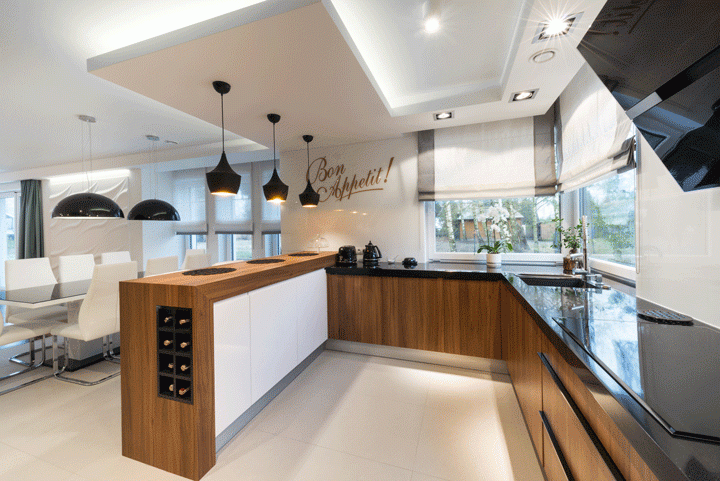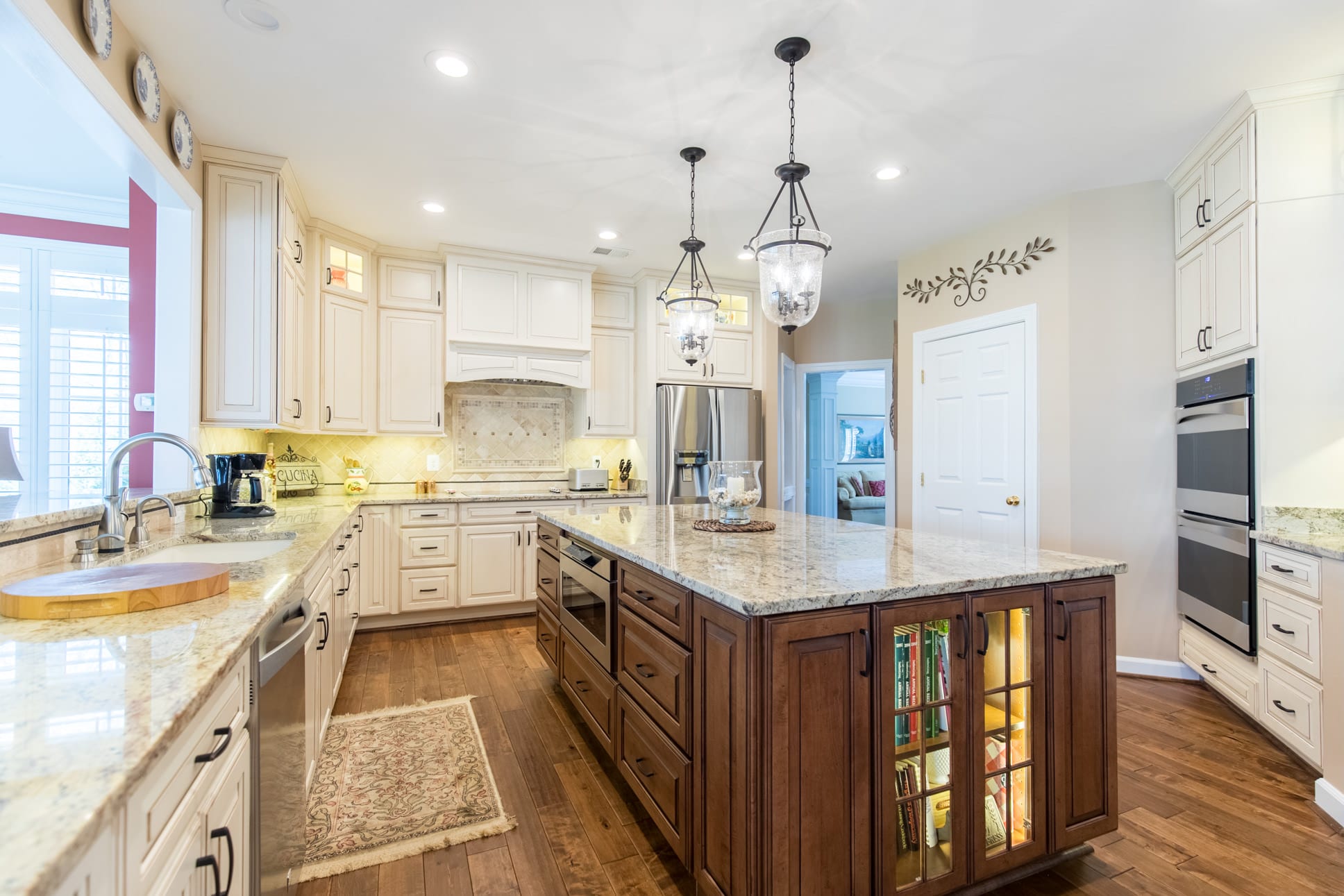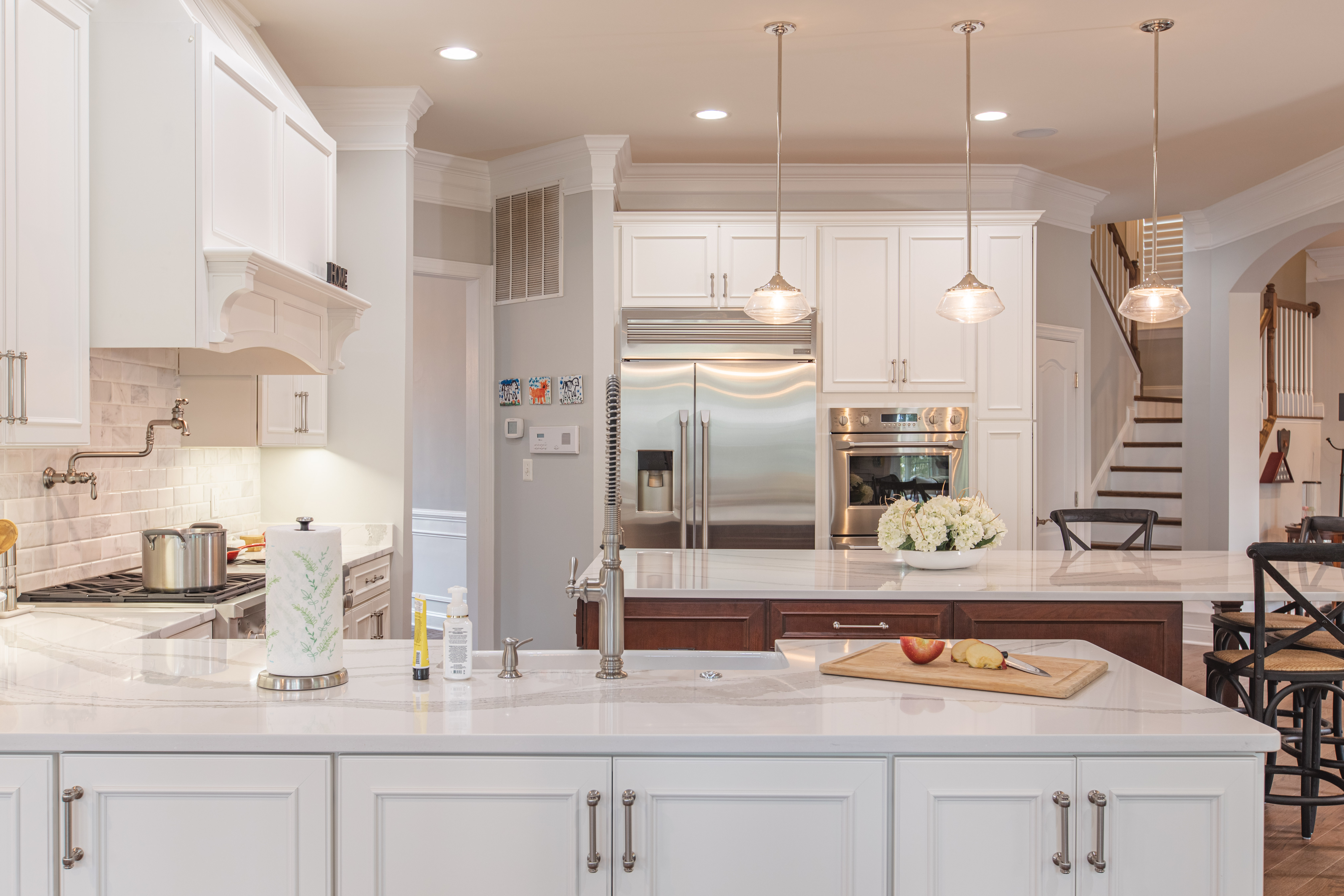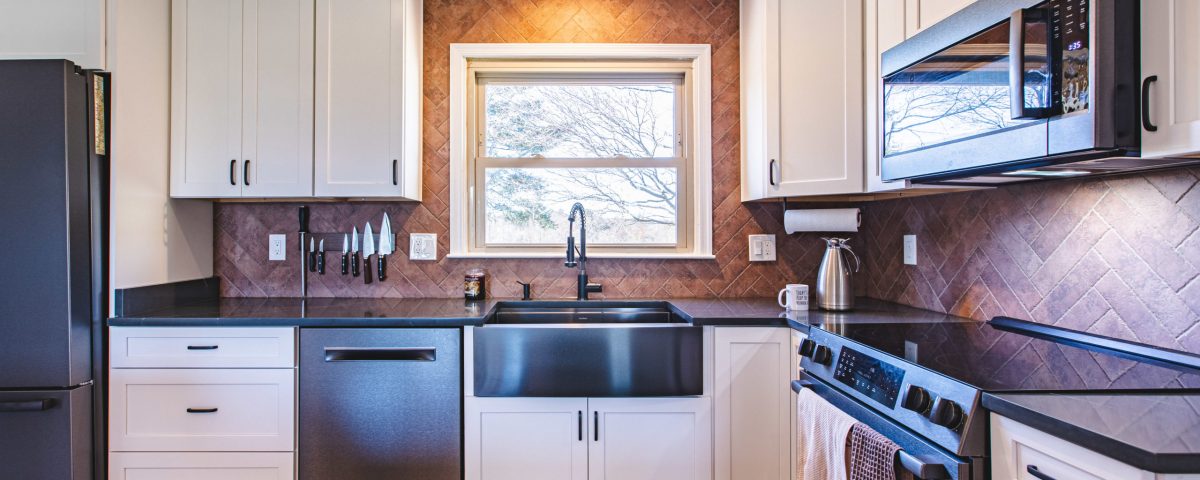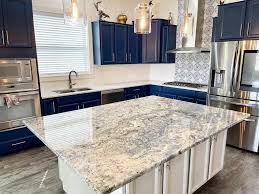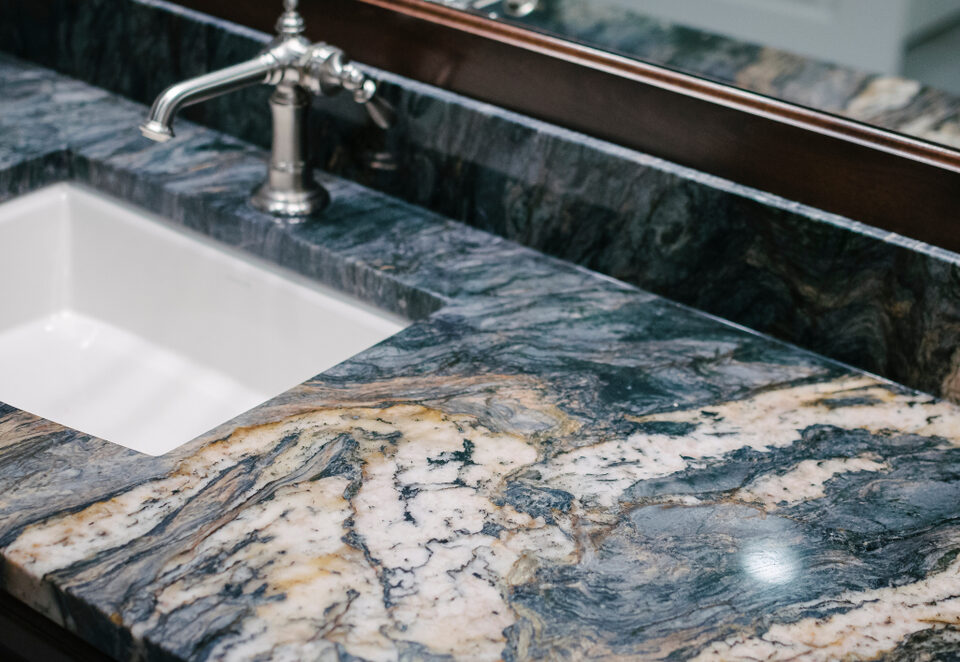
As a natural stone, granite is extremely robust, insensitive to cold or heat and very easy to clean, which favors it in use as a countertop.
February 16, 2021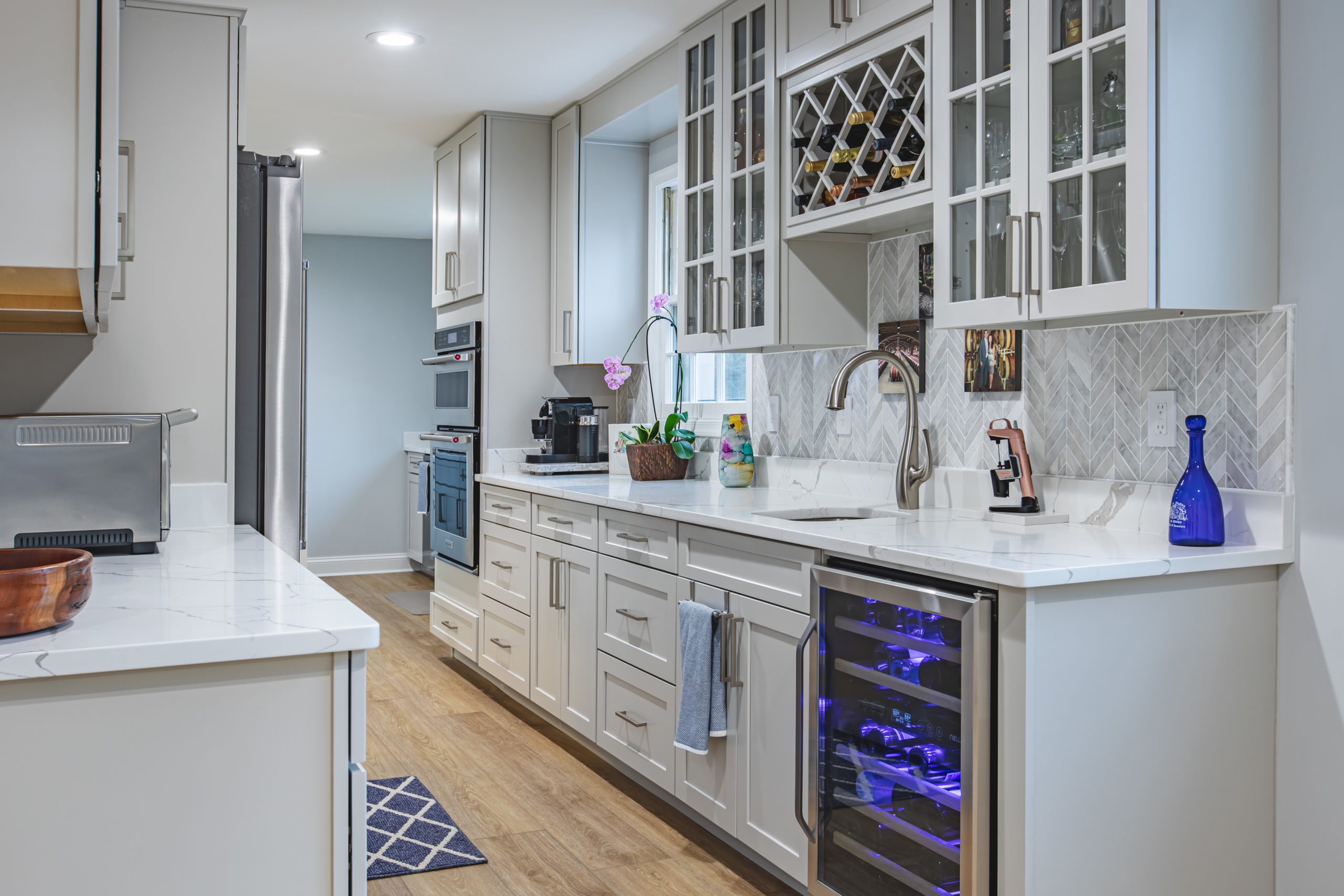
If you’re trying to create a new ambiance or setting in your kitchen, choosing the right countertop can be difficult and time-consuming.
March 10, 2021The natural aesthetics and sheer beauty of Granite can be enjoyed from the floor to the ceiling in a bathroom. A few great examples are Granite tub surrounds, Granite shower enclosures, and Granite vanity tops.
Dark to black natural stones are very much in line with the trend of modern interior design. This also includes black granite countertops. But due to its composition, black granite basically contains only light to dark minerals in combination. The proportionally dark minerals are originally contained in the rock only up to about 5%. It is exactly this mixture in blue-white, greenish, the characteristic white-grey or pinkish nuances that ultimately makes it so attractive. A look at the process of formation clarifies the interest in black granite countertops.
How is black granite formed?
Within the earth’s crust, at a depth of at least two kilometers, molten rock beneath the earth’s surface solidifies into granite. As a deep rock, granite is technically called plutonite. But before this process begins, magma chambers accumulated over a period of about 10 to 15 million years. The collected granitic magma needs the atmospheric pressure as well as a melting temperature of about 960° C to form crystals. The dark minerals have a higher density and solidify first. Minerals like quartz and feldspars follow.
This alternating process of melting and solidification of diverse minerals with different densities is called magmatic differentiation and creates the characteristic image of granite. The end product is an extremely hard and enormously durable rock – granite.
Visible minerals determine the appearance
Granite, like black granite, contains primarily quartz as well as orthoclase feldspars. In addition, there are zircon, muscovite, apatite, tourmaline and other minerals. Especially albite and quartz are the bright minerals, which are naturally contained in granite due to the formation process. For this reason alone, black granite can never be black originally. Black granite, as it can be found as natural stone in the trade, has similar structures as the original granite. Here, the extreme hardness and the intergrown mixture parts play a central role. They are the decisive point for the high quality that the granite generally brings. Another important factor is the unique usage properties that the raw material granite has. When used as a floor tile, this natural stone is durable, extremely robust and resistant. As a design element, the raw material granite is often colored dark to black, and in the final result as black granite creates an exceedingly handsome product, with shimmering minerals creating a luxurious effect without sacrificing quality.
Plutonic rock in use as black granite countertops
The officially allowed name black granite usually hides rocks such as diorite, gabbro, larvikite, basalt or anorthosite. The anorthosite, for example, is also a plutonic rock and brings similar density and hardness structures as the granite. The mixing of crystals and minerals is also present in this natural stone. With a dark gray coloration, this rock is colored after quarrying and is sold as black granite countertops.
